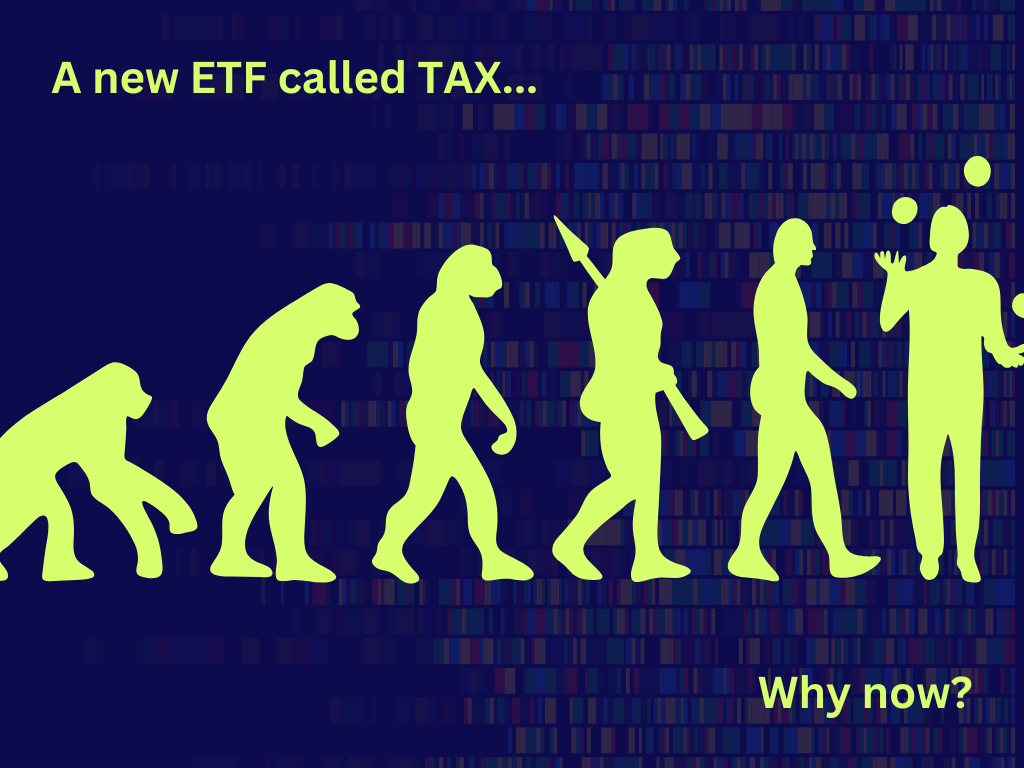TAX distills a century of tax strategy into an ETF
Meb Faber's Cambria Tax Aware ETF (ticker TAX) is an actively-managed value fund. It could accelerate ETF growth by normalizing the 351 conversion, which allows retail to contribute assets in-kind.
🔴 LIVE 🔴 ask-me-anything with Meb Faber: Tuesday, October 22 at 10 AM PST / 1 PM EST
A century of tax strategy
After spending dozens of hours researching the Cambria Tax Aware ETF (ticker TAX), which will launch in mid-December 2024, and the Section 351 conversion that will allow anyone to seed TAX in-kind (which defers, but does not eliminate taxation), and after speaking with several ETF sponsors (who would not say anything juicy on the record for this piece), I’ve realized all the commotion comes down to answering one question.
Why now?
TAX, the ticker, is provocative.
The Section 351 conversion is provocative (however nerdy).
Pitching the public is provocative.
But none of this explains how we got here.
Here’s how I think1 it happened…
100 years ago: The 1031 exchange makes in-kind transfers mainstream
50 years ago: Exchange funds productize in-kind stock transfers
30 years ago: Tax-aware investing kicks active investing in the teeth
10 years ago: The 351 conversion starts getting broader use
8 years ago: Direct indexing picks up steam
6 years ago: Wes Gray and team launch ETF Architect
5 years ago: The SEC modernizes ETF regulation
This year: ETF Architect and Practus show they’ve done many 351s
Soon: TAX brings these ideas to the masses
“Trying to corral thousands of investors is probably not something we’re capable of…” Meb said in a recent interview on Bloomberg. “ETF Architect, Wes Gray and that crew, they have that military efficiency. So they’ve already done one. The last one they did had 5,000 accounts.”
TAX mashes together a bunch of things that already exist and enhances them.
So what?
The active strategy inside of TAX isn’t very exciting (just one guy’s opinion), but normalizing the 351 is. I wrote about this last week, so to quickly summarize, if ETF sponsors launch all ETFs using a publicly accessible 351 conversion, it could catalyze further ETF adoption by making the switch from private funds, hedge funds, separate accounts, and mutual funds tax-free.
Why switch? To reallocate or diversify locked-up assets.
It’s also possible we discover working with the investing public is more hassle than it’s worth, although the legal and operations frameworks are in place to scale. Or retail simply doesn’t care. Retail adoption of productized tax strategy is mixed.
351s may remain a tool for the very wealthy or advisors who have discretion over many client accounts, and we might consider Cambria’s launch of TAX a cautionary tale.
While the 351 conversion is getting attention now, the marketing buzz will wear off if everyone does it. Whatever the case, TAX needs to stand on its own after the IPO
On Tuesday, I’m hosting Meb for an ask-me-anything live on LinkedIn.
I will emcee the event and field questions from the audience, but if no one pipes up, here’s what I will ask…
What is TAX?
Why are you launching the Cambria Tax Aware ETF?
Why now?
Why did you choose the ticker TAX?
How do you plan to seed TAX?
What does it mean to seed an ETF in-kind?
Aren’t all ETFs seeded in-kind?
What is a 351 conversion?
Is a 351 conversion the same as an exchange fund?
What are the main problems a 351 conversion solves?
What are the non-tax advantages of a 351?
What's changed recently to make 351s possible/cheaper?
351s are generally quiet; why engage the public?
How do TAX and the 351 conversion work?
What are the basic steps to complete a 351 conversion?
What is the conversion timeline?
Who pays legal and operations fees for the 351 conversion?
What happens to the cost basis and holding period after conversion?
Does a 351 eliminate taxes?
Can investors contribute assets from multiple brokerage accounts?
What are the diversification rules?
How will Cambria test the diversification rules?
Some examples of portfolios that can transfer?
What are some examples of portfolios that cannot be transferred?
Do seed assets need to approximate TAX?
How long will Cambria take to redeem off-thesis positions?
What are investors actually investing in?
Why does 0.59% make sense for investors?
What could go wrong?
Could transferring assets make dividends nonqualified?
Could SEC restrict which assets Cambria could redeem? Or when?
Who is working on the 351 behind the scenes?
How many 351s have they done?
Could the 351 fail somehow?
What happens if TAX fails to break even? Liquidation or consolidation?
Can anything else happen to cause an unfavorable risk or tax event?
Join us. It should be fun.
Disclaimer
General information. Not investment, tax, or legal advice. Not a recommendation to buy or sell any investment product. Faber and Sullivan are not tax professionals. Find an adviser for personal advice. Sullivan is not compensated for producing this event.
This timeline comes from Meb’s interview on Bloomberg, an obsessive amount of reading about the origins of tax-efficient investing, conversations with specialists, and some guesses about how we got to this moment. Might be wrong. Who knows.





